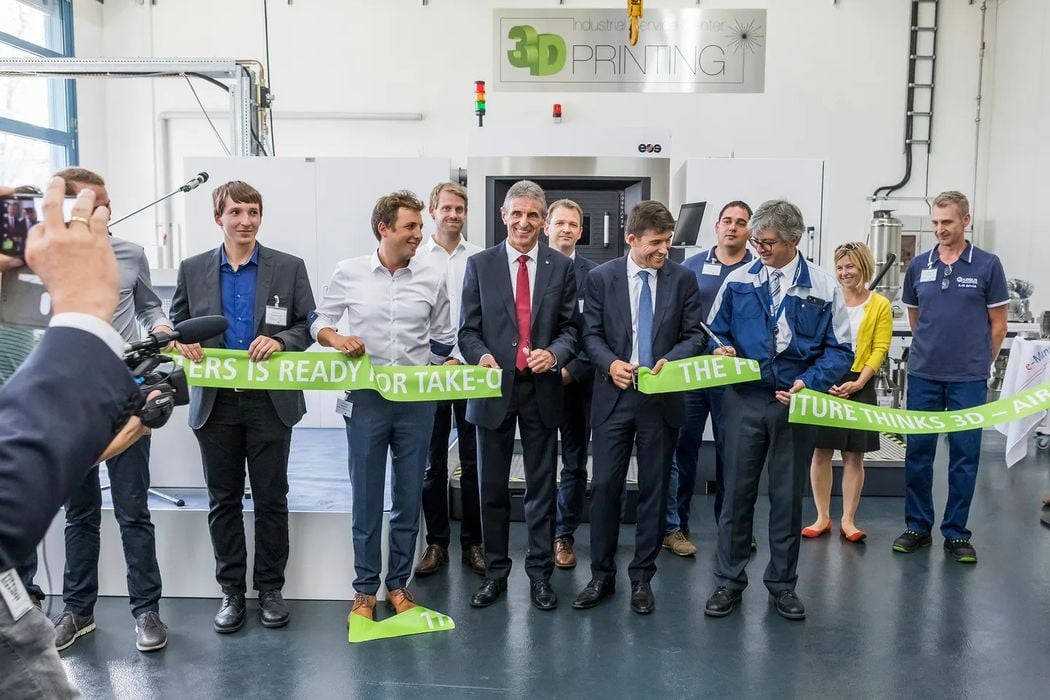
Charles R. Goulding and Preeti Sulibhavi explore how Airbus is navigating supply chain challenges and leveraging 3D printing technology to maintain its leadership in the aerospace industry.
Airbus, a global leader in the aerospace industry, recently announced a reduction in plane deliveries due to supply chain issues affecting a wide array of component parts. This development is somewhat unexpected, given Airbus’s notable expertise in 3D printing and the significant advancements in 3D printed aerospace components. We will delve into the current supply chain challenges faced by Airbus, explore the role of 3D printing in mitigating these issues, and examine recent examples of Airbus’s use of 3D printing technology.
The Current Supply Chain Challenges
Airbus’s supply chain disruptions are affecting various categories of components, with aircraft cabin parts being particularly impacted. This is puzzling since cabin components have seen considerable progress through 3D printing technologies. The high demand for plane refurbishments has exacerbated these supply chain issues, leading to delays and reduced deliveries.
The need for improved supply chain management is crucial, especially considering Airbus’s potential acquisition of parts businesses owned by Spirit AeroSystems. A thorough review of which components of Airbus can be 3D printed will be essential to streamline operations and reduce dependency on traditional supply chains.
The Role of 3D Printing in Airbus’s Supply Chain
Enhancing Inventory Management
One proposed solution to Airbus’s supply chain woes is building a significant inventory of critical parts. However, maintaining large inventories is costly and inefficient. This is where 3D printing can play a transformative role. By enabling on-demand production, 3D printing reduces the need for extensive inventories, thereby lowering costs and improving flexibility. 3D printing allows for rapid prototyping and production of parts, which can significantly reduce lead times. This capability is particularly beneficial for producing low-volume, high-complexity parts that are often critical in the aerospace industry. By integrating 3D printing into its supply chain strategy, Airbus can enhance its inventory management and mitigate the impact of supply chain disruptions.

Recent Examples of Airbus’s Use of 3D Printing
Interior Cabin Parts
Airbus has been at the forefront of incorporating 3D printing into the production of interior cabin parts. For instance, they have used 3D printing to create lightweight components for aircraft cabins, such as seat frames and panels. These parts not only reduce the overall weight of the aircraft, leading to fuel savings, but also offer enhanced design flexibility and customization options.
In one notable example, Airbus collaborated with Autodesk to produce a 3D-printed partition for the A320 aircraft. This partition, which separates the passenger cabin from the galley, is made from a strong yet lightweight lattice structure. The design was optimized for weight reduction and strength, showcasing the potential of 3D printing in producing complex, high-performance components.
Replacement Parts
Airbus has also leveraged 3D printing for the production of replacement parts. This is particularly advantageous in the aerospace industry, where the need for specific replacement parts can be unpredictable and urgent. By using 3D printing, Airbus can produce replacement parts on demand, reducing downtime and improving aircraft availability.
For example, Airbus has successfully used 3D printing to produce spare parts for the A350 XWB aircraft. These parts, including titanium brackets and air ducts, are manufactured using selective laser melting (SLM) technology. This not only ensures the parts meet the stringent quality standards required for aerospace applications but also allows for rapid production and delivery.
Production Tools and Prototypes
In addition to end-use parts, Airbus has extensively used 3D printing to produce tools and prototypes. This has enabled them to accelerate the development process and bring new products to market faster. For instance, Airbus has used 3D printing to create custom jigs and fixtures used in the assembly of aircraft. These tools are tailored to the specific requirements of each aircraft model, improving the efficiency and accuracy of the assembly process.
Furthermore, 3D printing has allowed Airbus to quickly produce prototypes for testing and validation. This rapid prototyping capability has been instrumental in the development of new aircraft components and systems, enabling Airbus to iterate and refine designs more efficiently.
The Future of 3D Printing in Airbus
The potential of 3D printing in the aerospace industry is vast. As the technology continues to advance, it will play an increasingly critical role in addressing supply chain challenges and enhancing production capabilities. For Airbus, the integration of 3D printing into their supply chain strategy offers numerous benefits, including reduced lead times, lower costs, and increased flexibility.
Training and Workforce Development
To fully realize the potential of 3D printing, it is essential for Airbus to invest in training and workforce development. As the company onboards thousands of new employees, integrating 3D printing training into their programs will be crucial. This will ensure that the workforce is equipped with the skills and knowledge needed to leverage 3D printing technologies effectively.
By fostering a culture of innovation and continuous improvement, Airbus can stay ahead of the curve and maintain its competitive edge in the aerospace industry. This includes not only training their current workforce but also collaborating with educational institutions and industry partners to develop specialized programs focused on 3D printing and advanced manufacturing.
Collaboration and Industry Partnerships
Collaboration is key to advancing 3D printing in the aerospace industry. Airbus has a long history of partnering with leading technology companies, research institutions, and suppliers to drive innovation. These collaborations have been instrumental in developing new 3D printing materials, processes, and applications.
For example, Airbus has partnered with Stratasys, a global leader in 3D printing, to explore new applications of additive manufacturing in aerospace. This partnership has resulted in the development of advanced 3D printing solutions, including the production of flight-ready parts for commercial aircraft. This includes aircraft interior components that can be printed in low volumes, with unique designs and meet regulatory requirements all while reducing production costs.
By continuing to foster these partnerships, Airbus can stay at the forefront of 3D printing innovation and leverage the collective expertise of the industry to overcome supply chain challenges and drive future growth.
The Research & Development Tax Credit
The now permanent Research and Development (R&D) Tax Credit is available for companies developing new or improved products, processes and/or software.
3D printing can help boost a company’s R&D Tax Credits. Wages for technical employees creating, testing and revising 3D printed prototypes can be included as a percentage of eligible time spent for the R&D Tax Credit. Similarly, when used as a method of improving a process, time spent integrating 3D printing hardware and software counts as an eligible activity. Lastly, when used for modeling and preproduction, the costs of filaments consumed during the development process may also be recovered.
Whether it is used for creating and testing prototypes or for final production, 3D printing is a great indicator that R&D Credit-eligible activities are taking place. Companies implementing this technology at any point should consider taking advantage of R&D Tax Credits.
Conclusion
The supply chain issues currently facing Airbus are a significant challenge, but they also present an opportunity to innovate and improve. By further embracing 3D printing and integrating it into its supply chain strategy, Airbus can enhance its production capabilities, reduce costs, and improve flexibility. The use of 3D printing for interior cabin parts, replacement parts, and production tools has already shown promising results, and there is vast potential for further advancements.
As Airbus continues to navigate the complexities of the aerospace industry, the role of 3D printing will undoubtedly become more prominent. With continued investment in technology, training, and partnerships, Airbus can leverage 3D printing to overcome supply chain challenges and drive future success. The aerospace industry is poised for a transformative shift, and 3D printing will be at the heart of this evolution.
